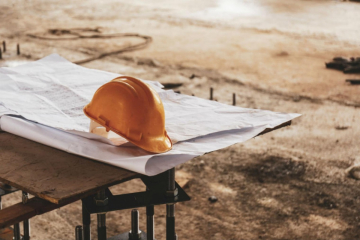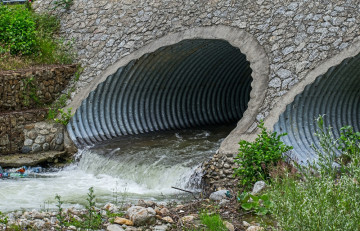When most of us think of stormwater and fees, we think of permit fees under Section 402 of the Clean Water Act (the Act). But more ominous and less-well-known are the developing municipal stormwater fees.
When most of us think of stormwater and fees, we immediately think of permit fees under Section 402 of the Clean Water Act (the Act). In a worst-case scenario, we may even think about penalties under the Act. But more ominous and less-well-known are the developing municipal stormwater fees becoming more and more prevalent across the country.
The Clean Water Act
In the years since the amendments to the Act in 1972, everyone has become familiar with both the requirements entailed by the regulations as well as the penalties for violating it. Its objective was intended to restore and maintain the chemical, physical, and biological integrity of the nation's waters by preventing point and nonpoint pollution sources. Largely administered by the States on behalf of the U.S. Environmental Protection Agency (USEPA), state agencies were empowered to address pollution. In some cases, these authorities have even been granted to local municipalities to enforce although that situation is much more rare.
But by now most of us know how to manage stormwater under the National Pollution Discharge Elimination System (NPDES). While there may be occasional fits and starts where various of our facilities may incur minor penalties it is not often that one hears of a violation of the Act that runs into the tens of thousands or even the hundreds of thousands of dollars under the Multi-Sector General Permit.
So when we hear about local ordinances that can cost facilities tens or even hundreds of thousands of dollars a year, that is a stormwater issue that can grab our collective attention!
The New Municipal Stormwater Fees
Across the country, up to 8,000 municipalities are considering passing stormwater fee ordinances that could cost large property owners hundreds of thousands of dollars every year. In Virginia, Texas, Washington, and California – just to name a few states – several municipalities already have ordinances in place and have been sending bills for years now. Property owners like railroads and oil terminals or refineries are often some of the largest landowners in a city or a county, and so they often end up with the largest bills.
Unfortunately, these ordinances are not being passed under the auspices of the Act. Very few of these agencies have been delegated any authority under Section 402. So while this is often couched as a clean water effort when the ordinances are being written and ballots are voted on, there are many concerns about the collection and use of these fees. Generally, the monies taken in are slated for projects that may lead to cleaner discharges of stormwater from a city’s municipal separate storm sewer system (MS4), projects such as separating old systems to avoid combined sewer overflows (CSOs) and even removing sediment trapped in old systems and disposing of it in landfills. But often much of the money is being used to support the general operation and maintenance of the municipality’s MS4 system, general maintenance that formally was paid by property taxes that are, of course, still being paid. As a result, many view these new fees as a duplicative tax on existing property. However, to date the courts have upheld municipalities’ rights to set these fees and have not classified them as a new tax. As the process continues through the courts, this could always change in the future.
In the meantime, what can facilities do to minimize their exposure and financial risk?
What Property Owners Can Do
In areas where there is yet no ordinance, but one may be in the process of development, it would be worth the facilities’ while to get involved on a local level with the writing of potential regulations. Key to these discussions is a consideration of what surfaces may be considered pervious and what may be considered impervious. Often municipalities are defaulting to considering ballast and all other gravel surfaces as impervious or semi-pervious, which results in a lot of stormwater fees’ being assessed for an area as large as a railroad yard to oil terminal. The more that can be done to define and limit the amount of surface area considered to be causing sheet flow to the local MS4 system, the more a property owner can limit their future utility bills.
For those areas where an ordinance is already in place, all hope is not yet lost! It can definitely pay for itself when the property owners invest some time in studying the wording of the ordinance in an effort to take advantage of how it is written. Depending on the definition of the various surfaces, arguments can be made as to how much property can have fees levied on it. Better defining the extent of those surfaces will always be the low-hanging fruit. Getting deeper into the ordinances often reveals some credits and exemptions that the facilities can take advantage of especially for infiltration areas.
Facilities can also take this into consideration when planning redevelopment or improvement projects. If an ordinance is already in place, or even if there is a strong possibility that an ordinance if likely to be considered in the future, low-impact development (LID) approaches can often pay for themselves. More and more municipalities, especially in water sensitive parts of the country like California, are requiring LID consideration when issuing development permits. By designing stormwater systems to incorporate infiltration basins, bioswales, and other LID features facilities can limit both stormwater runoff as well as future stormwater fee liability.
How Antea Group Can Help
Antea Group is helping our clients cope with stormwater fees by providing the analysis of both impervious surface areas and potential credits and exemptions. While these ordinances can vary from state to state and municipality to municipality, Antea Group’s national footprint of offices can support individual facilities in getting more involved with local ordinance development to help governmental agencies better understand the impact these fees can have.
In planning for your future facility developments, feel free to reach out to your local Antea Group office to consider the potential for LID. Not only are LID features like bioswales and infiltration galleries better for the environment, they are going to help save you money down the road by helping reduce your fees.
Need support with stormwater planning? Contact us today.
Want more news and insights like this?
Sign up for our monthly e-newsletter, The New Leaf. Our goal is to keep you updated, educated and even a bit entertained as it relates to all things EHS and sustainability.
Get e-NewsletterHave any questions?
Contact us to discuss your environment, health, safety and sustainability needs today.




